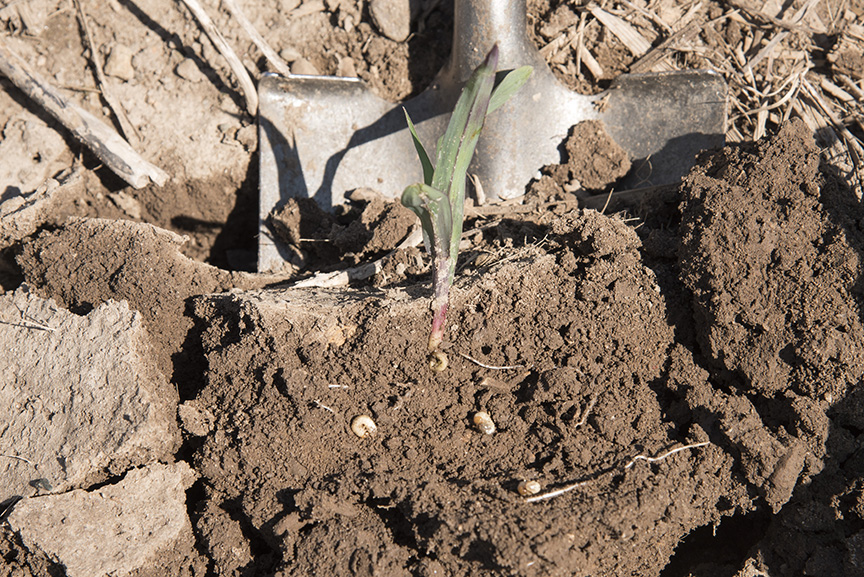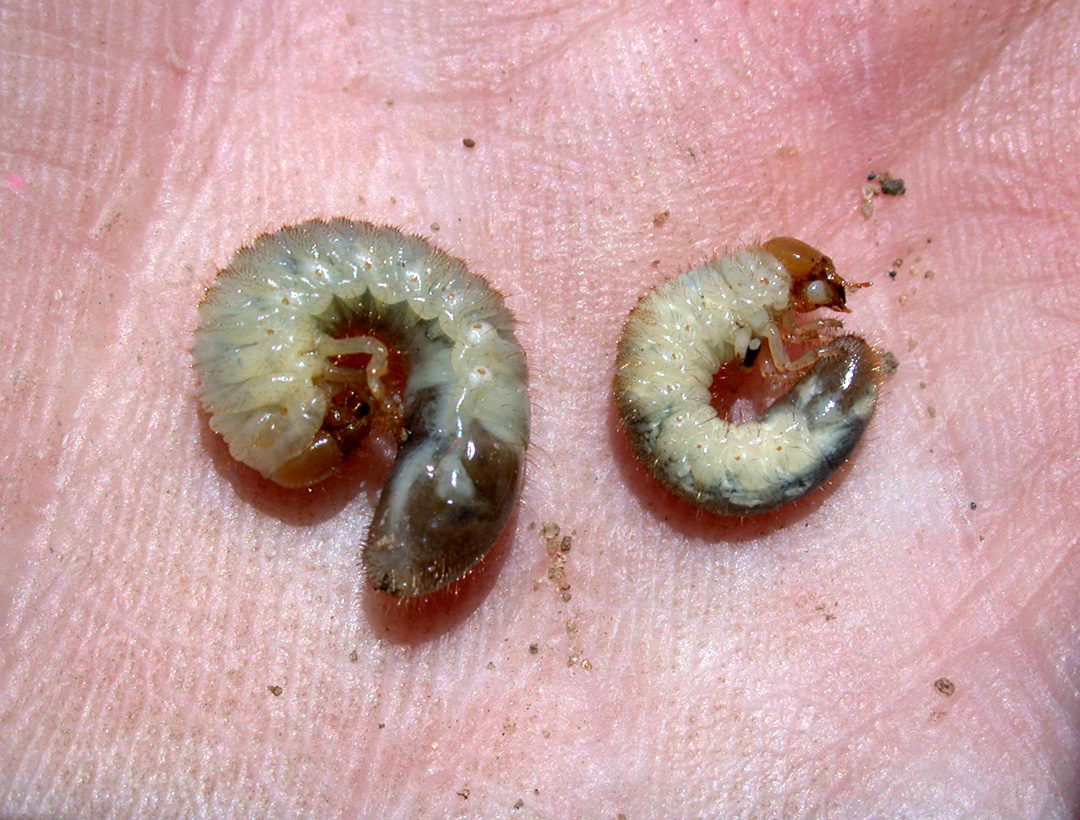Grubs of the Asiatic garden beetle have been recently found damaging corn seedlings in northern Indiana counties. As noted in the past, their presence and damage is highly associated with light-textured (i.e. sandy) soils, and is most prevalent in corn following soybean. There are no “rescue treatments” for this pest. In any event, grub damage will be tapering off as they have begun to pupate in the soil. As with many below-ground and cryptic pests, once you see the damage in the field, it’s too late to do much about it.
Adults of the Asiatic garden beetle, present mostly in July and August, are somewhat undescribed in terms of their habits, because they are principally active at night. Decades-old literature suggest that the adult has nearly a hundred hosts, including a range of crops, flowers, and many weeds. We have heard stories, and seen video, of damaged plants/weeds being dug up to reveal hundreds of beetles “bubbling” out of the soil.
Research has focused upon what attracts beetles to crop fields to lay eggs in summer, causing grub problems the following spring. As mentioned, it is often soybeans planted on sandy, and or gravelly, soils. Many unknowns, e.g., tillage, growth stage, weeds (prevalence and species), row spacing, fertility, etc., may, or may not be factors in attracting beetles to lay eggs. We do know that the egg-laying period is so extended that attempts to apply foliar insecticides to deter beetles isn’t feasible – application timings are not likely to encounter enough of the females to make a dent.
Thanks to those that have called and sent emails/pictures. Happy scouting!




